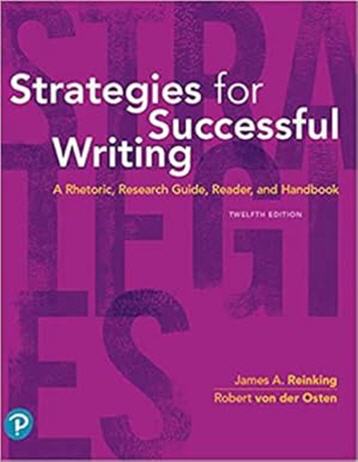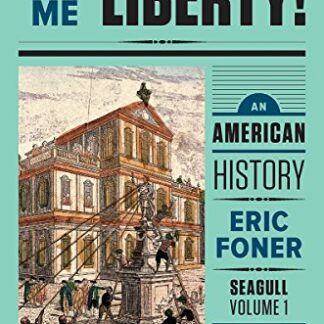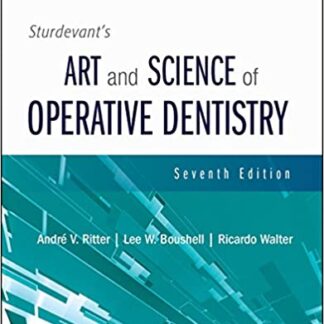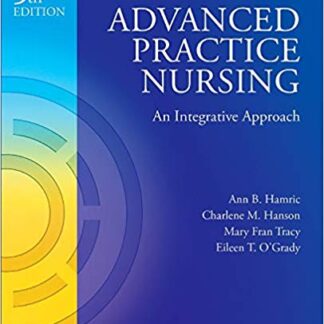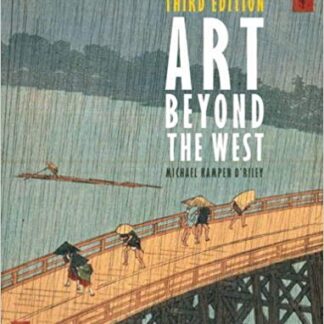Description
Strategies for Successful Writing: A Rhetoric, Research Guide, Reader and Handbook 12th Edition, ISBN-13: 978-0135203415
[PDF eBook eTextbook] – Available Instantly
- Publisher: Pearson; 12th edition (June 14, 2019)
- Language: English
- 657 pages
- ISBN-10: 0135203414
- ISBN-13: 978-0135203415
Successful strategies for civil writing.
With ample material for a full-year composition course Strategies for Successful Writing, 12th Edition supports students as they learn to compose in the rhetorical modes. Diverse examples demonstrate writing concepts and strategies, so students can recognize them more easily in the longer reading selections and apply them in their own compositions.
Instruction is brief and to the point, allowing students to spend more time writing and less time reading about writing. The authors’ conversational yet concise approach invites students into the book, reducing their apprehensions about writing and providing a model for their own prose. The 12th Edition stresses the importance and characteristics of civil writing – addressing the growing cultural challenges posed by social media and the increasingly hostile discourse in many media. This edition also increases emphasis on visual rhetoric and multimedia approaches to writing and texts.
Table of Contents:
Brief Contents
Contents
Thematic Table of Contents
Preface
What’s New in the Twelfth Edition
Classic Pedagogy
Organization
Reveltm
Format Options
Supplements
Acknowledgments
To the Student
Rhetoric
Chapter 1 Writing: A First Look
Learning Objectives
The Purposes of Writing
More Specific Purposes
The Audience for Your Writing
The Effect of Audience on Your Writing
Civil Writing
Discourse Communities: Exploring Your Field of Writing
The Qualities of Good Writing
Writing and Critical Thinking
Writing in a Multimedia World
Writing and Ethics
The Principles of Ethical Writing
Plagiarism
A First Look at Your Writing: A Summary
Chapter 2 Strategies for Successful and Critical Reading
Learning Objectives
Orienting Your Reading
Multimedia Reading
Civil Reading
Strategies for Reading and Rereading
A First Reading
Orient Yourself to the Background of the Essay
Use the Title as a Clue
Skim to Get the Gist of the Article
Make Connections with What You Have Read
The Second Reading and Beyond
Read Carefully and Actively
Consider Reading as a Conversation with the Text
Master Unfamiliar Words
Take Steps to Understand Difficult Material
Pull the Entire Essay Together
Mastering Reading Problems
Reading to Critique: Reading Critically
Reading Assignments Carefully
Objective Description Short Assignment (50 points)
Reading as a Writer
Exploring Your Field of Writing
Sample Reading
Writing a Summary
Writing a Critique
Writing in a Multimedia World
Successful Reading: A Summary
Chapter 3 Planning and Drafting Your Paper: Exploration
Learning Objectives
Understanding the Assignment
Zeroing in on a Topic
Strategies for Finding a Topic
Tapping Your Personal Resources
Keeping a Journal
Sorting Out a Subject
Asking Questions
Freewriting
Brainstorming
Identifying Your Audience and Purpose
Considering Your Media: Writing for Multimedia
Gathering Information
Strategies for Gathering Information
Brainstorming
Branching
Reading
Talking with Others
Thinking Critically About Your Topic
Organizing the Information
The Flexible Notes System
Creating an Outline
Developing a Thesis Statement
Requirements of a Good Thesis Statement
Omission of Thesis Statement
Changing Your Thesis Statement
Writing the First Draft
Civil Writing
Planning and Drafting Your Paper: A Summary
Chapter 4 Revising and Editing Your Paper: Courageous Transformations
Learning Objectives
Preparing to Revise
Considering the Whole Essay
Thinking Critically About Your Draft
Strengthening Paragraphs and Sentences
Strengthening Paragraphs
Sharpening Sentences and Words
Writing the Introduction, Conclusion, and Title
Writing the Introduction and Conclusion
Selecting a Title
Peer Evaluation of Drafts
Responding to Your Peers’ Drafts
An Example of Peer Response in Response to “Cell Phone Use”
Acting on Your Peers’ Responses
Proofreading Your Draft
Collaborative Writing
Collaboration Using Electronic and Social Media: Writing in a Multimedia World
Maintaining and Reviewing a Portfolio
Revising Your Paper: A Summary
Chapter 5 Paragraphs
Learning Objectives
Unity
The Topic Sentence
Adequate Development
Organization
Writing Strategies
Order of Climax
Coherence
Connecting Words and Phrases
Repeated Key Words
Pronouns and Demonstrative Adjectives
Parallelism
Paragraphs with Special Functions: Introductions, Transitions, and Conclusions
Introductions
A Directly Stated Thesis
A Definition
A Quotation
An Anecdote or Personal Experience
Interesting Details
A Question
Transitional Paragraphs
Conclusions
Restatement of the Thesis
A Summary
A Question
A Quotation
Arresting Statement
Personal Challenge
Hope or Recommendation
Multimedia Writing
Writing Effective Paragraphs: A Summary
Chapter 6 Effective Sentences
Learning Objectives
Avoiding Unnecessary Wordiness
Varying Sentence Complexity and Length
Word Order in Independent Clauses
Positioning of Movable Modifiers
Using Parallelism
Choosing the Right Verb Voice: Active or Passive
Beyond the Single Sentence
Sentence Strategies: A Summary
Chapter 7 Achieving Effective Style and Tone Through Word Choice
Learning Objectives
Selecting the Right Words
Choosing Words with the Meaning You Want
Deciding on Concrete and Abstract Words
Deciding How Specific or General Words Should Be
Using Dictionaries and Thesauruses
Dictionaries
Idioms
Irregular Forms
Usage Labels
Supplementary Information
Thesauruses
Achieving the Desired Rhetorical Effect
Selecting the Best Level of Diction
Formal Level
Informal Level
Formal–Informal Level
Technical Level
Establishing the Intended Tone
Managing Denotation and Connotation
Objective Tone
Other Attitudes
Special Stylistic Techniques: Figurative Language, Irony, and Multimedia
Figurative Language
Simile and Metaphor
Personification
Overstatement
Understatement
Irony
Multimedia Writing
Eliminating Flawed Diction
Wordiness
Ambiguity
Euphemisms
Colloquial Language and Slang
Clichés and Mixed Metaphors
Clichés
Mixed Metaphors
Sexist Language
Achieving Effective Style and Tone: A Summary
Chapter 8 Narration: Telling Life’s Stories
Learning Objectives
The Purpose of a Narrative
Exploring Your Field of Writing
Civil Writing
Action, Conflict, and Point of View
Action
Conflict
Point of View
Key Events
Dialogue
Thinking Critically About Narratives
Ethical Issues
Writing a Narrative
Prewriting the Narrative
Planning and Drafting the Narrative
Revising the Narrative
Writing Narratives in a Multimedia World
Critical Synthesis with Sources: Narration
Writing a Narrative: A Summary
Chapter 9 Description: Capturing Your World
Learning Objectives
The Purpose of Description
Exploring Your Field of Writing
Civil Writing
Sensory and Dominant Impressions
Sensory Impressions
Dominant Impression
Vantage Point
Selection and Arrangement of Details
Selection of Details
Arrangement of Details
Thinking Critically About Descriptions
Ethical Issues
Writing a Description
Prewriting the Description
Planning and Drafting the Description
Revising the Description
Writing Description in a Multimedia World
Critical Synthesis with Sources: Description
Writing a Description: A Summary
Chapter 10 Process Analysis: Explaining How
Learning Objectives
The Purpose of Process Analysis
Exploring Your Field of Writing
Civil Writing
Kinds of Process Analysis Papers
Processes for Readers Who Will Perform Them
Processes for Readers Who Won’t Perform Them
Writing Process Analysis in a Multimedia World
Thinking Critically About Process
Ethical Issues
Writing a Process Analysis for Readers Who Will Perform the Process
Writing a Process Analysis for Readers Who Will Not Perform the Process
Revising the Process Analysis
Work Cited
Critical Synthesis with Sources: Process Analysis
Writing a Process Analysis: A Summary
Chapter 11 Illustration: Showing and Telling
Learning Objectives
The Purpose of Illustration
Exploring Your Field of Writing
Civil Writing
Selecting Appropriate Examples
Number of Examples
Organizing the Examples
Thinking Critically About Illustrations
Ethical Issues
Writing an Illustration
Prewriting for the Illustration
Drafting the Illustration
Revising the Illustration
Writing Illustrations in a Multimedia World
Critical Synthesis with Sources: Illustration
Writing an Illustration: A Summary
Chapter 12 Classification: Grouping into Categories
Learning Objectives
The Purpose of Classification
Exploring Your Field of Writing
Civil Writing
Selecting Categories
Number of Categories
Developing Categories
Thinking Critically About Classification
Ethical Issues
Writing a Classification
Prewriting for the Classification
Planning and Drafting the Classification
Revising the Classification
Writing Classifications in a Multimedia World
Critical Synthesis with Sources: Classification
Writing a Classification: A Summary
Chapter 13 Comparison: Showing Relationships
Learning Objectives
The Purpose of Comparison
Exploring Your Field of Writing
Civil Writing
Selecting Items for Comparison
Developing a Comparison
Organizing a Comparison
The Block Pattern
The Alternating Pattern
Using Analogy
Thinking Critically About Comparisons and Analogies
Ethical Issues
Writing a Comparison
Prewriting the Comparison
Planning and Drafting the Comparison
Revising the Comparison
Writing Comparisons in a Multimedia World
Critical Synthesis with Sources: Comparison
13.10 Writing a Comparison: A Summary
Chapter 14 Cause and Effect: Explaining Why
Learning Objectives
The Purpose of Cause and Effect
Exploring Your Field of Writing
Civil Writing
Patterns in Causal Analysis
Reasoning Errors in Causal Analysis
Ignoring Multiple Causes
Mistaking Chronology for Causation
Confusing Causes with Effects
Thinking Critically About Cause and Effect
Ethical Issues
Writing a Causal Analysis
Prewriting the Cause-and-Effect Essay
Planning and Drafting a Cause-and-Effect Essay
Revising the Cause-and-Effect Analysis
Writing Cause and Effect in a Multimedia World
Critical Synthesis with Sources: Cause and Effect
Writing a Causal Analysis: A Summary
Chapter 15 Definition: Establishing Boundaries
Learning Objectives
The Purpose of Definition
Exploring Your Field of Writing
Civil Writing
Types of Definitions
Synonyms
Essential Definitions
Limitations of Essential Definitions
Pitfalls in Preparing Essential Definitions
Extended Definitions
Thinking Critically About Definitions
Ethical Issues
Writing an Extended Definition
Prewriting the Extended Definition
Planning and Drafting the Extended Definition
Revising the Extended Definition
Writing Definitions in a Multimedia World
Works Cited
Critical Synthesis with Sources: Definition
Writing an Extended Definition: A Summary
Chapter 16 Argument: Convincing Others
Learning Objectives
The Purpose of Argument
Exploring Your Field of Writing
Civil Writing
Framing the Argument
The Rational Appeal
Established Truths
Opinions of Authorities
Primary Source Information
Statistical Findings
Personal Experience
Evaluation of Evidence
Reasoning Strategies
Induction
Deduction
Syllogisms: Deduction Must Follow Logically
Avoiding Misuse of Syllogisms
Reductio ad Absurdum
Analogy in Argument
The Emotional Appeal
Writing Arguments in a Multimedia World
The Ethical Appeal
Other Types of Arguments: Rogerian and Exploratory Arguments
Rogerian Arguments
Exploratory Arguments
Ferreting Out Fallacies
Fallacies of Evidence
Hasty Generalization
Card Stacking
Stereotyping
Fallacies of Logical Order
Non Sequitur
Post Hoc, Ergo Propter Hoc
Either/Or Fallacy
Begging the Question/Circular Argument
Faulty Analogy
Arguing Off the Point
Fallacies That Are Faulty Forms of Emotional Appeal
The Argument Ad Hominem
Appeal to the Crowd
Guilt by Association
Thinking Critically About Arguments
Ethical Issues
Writing an Argument
Prewriting the Argument
Focusing Your Question
Exploring Your Topic
Planning an Argument
Arguments for Different Purposes
Directing Arguments to Readers
Drafting the Argument
Revising the Argument
Works Cited
Critical Synthesis with Sources: Argument
Writing an Argument: A Summary
Chapter 17 The Essay Examination
Learning Objectives
Studying for the Examination
Exploring Your Field of Writing
Civil Writing
Types of Test Questions
Preparing to Write
Writing the Examination Answer
Writing Essay Exams in a Multimedia World
Writing the Essay Examination Answer: A Summary
Chapter 18 Writing About Literature, Movies, and Television Shows
Learning Objectives
The Elements of Creative Works
Plot
Plot Factors
Writing About Plot
Setting
Setting Factors
Writing About Setting
Character
Character Factors
Writing About Character
Point of View
Point-of-View Factors
Writing About Point of View
Symbols
Symbol Factors
Writing About Symbols
Theme
Theme Factors
Writing About Theme
Other Literary Devices: Memes, Ambiguity, Juxtaposition, and Irony
Memes
Ambiguity
Juxtaposition
Irony
Ethical Issues
Civil Writing
The Writing Process: Writing About Literature, Movies, and Television
Writing a Review, Explication, or Literary Analysis
Reviews
Explication
Literary Analysis
Writing in a Multimedia World
Work Cited
Critical Synthesis with Sources: Media and Literature
Explore, Research, Write
Chapter 19 The Research Paper
Learning Objectives
Preparing to Research: Civil Writing and Writing in Your Field
Civil Writing
Exploring Your Field of Writing
Learning About Your Library
Choosing a Topic
Topics to Avoid
Drawing on Your Interests
Discovering Your Sources
Searching the World Wide Web
Evaluating Internet Material
Online Catalog
Obtaining the Books
Database Indexes
Keyword Search
Subject Search
Advanced Search
Obtaining the Articles
Other Internet Resources
E-Mail
Newsgroups and Blogs
Listservs
Creating an Annotated Bibliography
Primary Research Findings
Adjusting Your Topic
Taking Notes
Evaluating Your Sources
The Author’s Expertise
The Publication’s Credibility
Mechanics of Note Taking
Responding to Notes
Types of Notes
Summary
Paraphrase
Quotation
Organizing and Outlining
Developing Your Outline
Keying Your Computer Notes or Note Cards to Your Outline
Ethical Issues
Writing Your Research Paper
Writing the First Draft
Using Images, Illustrations, and Graphs
Photos and Other Images
Tables
Pie Charts
Bar Graphs
Line Graphs
Headers, Numbered Lists, and Bullets
Multimedia Writing
Avoiding Plagiarism
Integrating and Synthesizing Sources
Preparing Your Finished Copy
Writing Your Research Paper Checklist
Chapter 20 Documenting Sources: MLA Style
Learning Objectives
MLA System for Preparing Papers
Preparing Proper MLA Bibliographic References
Books
Periodicals
Encyclopedia Articles
Government Documents
Other Sources
Online Sources
Social Media and E-Mail
Handling In-Text Citations
Basic Citation Form
Authors with the Same Last Name
Separate Works by the Same Author
Two Sources for the Same Citations
Unsigned References
Citing Quotations
Indirect Citations
Authors Identified in Text
Chapter 21 Documenting Sources: APA Style
Learning Objectives
APA System for Preparing Papers
Preparing Proper APA Bibliographic References
Books
Periodicals
Encyclopedia Articles
Government Documents
Other Sources
Online Sources
Handling In-Text Citations
Basic Citation Form
Authors with the Same Last Name
Separate Works by the Same Author
Two Sources for the Same Citations
Unsigned References
Citing Quotations
Indirect Citations
Authors Identified in Text
HGTV: Building Not Just Homes but a Globally Successful Network
Abstract
HGTV: Building Not Just Homes but a Globally Successful Network Introduction
Parent Company
HGTV as Part of a Conglomerate
HGTV Taking Advantage of Cheap Production
Importing from Canada
Utilizing Reality TV’s Inexpensive Nature
HGTV Breaking Down Cultural Barriers
Conclusion
References
Chapter 22 Additional Research Strategies: Interviews, Questionnaires, Direct Observations
Learning Objectives
The Value of Primary Research
Exploring Your Field of Writing
General Principles for Primary Research
Civil Writing
Ethical Issues
Ethical Review of Primary Research
Interviews
Choosing the Interviewee
Preparing for the Interview
Conducting the Interview
Writing About the Interview
Questionnaires
Developing the Questionnaire
Two-Choice Items
Multiple-Choice Items
Checklists
Ranking Lists
Scale Items
Open-Ended Items
Testing and Administering the Questionnaire
Totaling the Responses
Writing the Questionnaire Report
Purpose and Scope of Survey
Results of Survey
Recommendations
Direct Observations
Preparing to Make the Observations
Making the Observations
Writing the Report
Sample Student Observation Report
Reader
Narration
Description
Process Analysis
Illustration
Classification
Comparison
Cause and Effect
Definition
Argument
Handbook
Editing Symbols
Sentence Elements
Subjects and Predicates
Complements
Appositives
Parts of Speech
Nouns
Proper Nouns
Common Nouns
Count and Non-Count Nouns
Pronouns
Personal Pronouns
Relative Pronouns
Interrogative Pronouns
Demonstrative Pronouns
Reflexive and Intensive Pronouns
Indefinite Pronouns
Reciprocal Pronouns
Verb Types
Action Verbs
Linking Verbs
Auxiliary Verbs
Verbs: Tense, Time, Forms, Voice, and Mood
Past Participle
Future Time
Perfect Verb Forms
Progressive Verb Forms
Usage
Voice: Active and Passive
Mood
Adjectives
Common Adjectives
Proper Adjectives
Comparison with Adjectives
Determiners
Adverbs
Formation of Adverbs
Comparison with Adverbs
Prepositions
Conjunctions
Coordinating Conjunctions
Subordinating Conjunctions
Conjunctive Adverbs
Interjections
Phrases and Clauses
Phrases
Prepositional Phrases
Participial Phrases
Gerund Phrases
Infinitive Phrases
Verbals Not in Phrases
Clauses
Noun Clauses
Adjective Clauses
Adverb Clauses
Sentence Types
Simple Sentences
Compound Sentences
Complex Sentences
Compound–Complex Sentences
Editing to Correct Sentence Errors
Revising Sentence Fragments
Methods of Revision
Intentional Fragments
Revising Run-On Sentences and Comma Splices
Testing for Errors
Methods of Revision
Creating Subject–Verb Agreement
Subject and Verb Separated by a Word Group
Two Singular Subjects
One Singular and One Plural Subject
Collective Nouns as Subjects
Sentences in Which the Verb Comes Ahead of the Subject
Achieving Pronoun–Antecedent Agreement
Indefinite Pronouns as Antecedents
Two Singular Antecedents
Singular and Plural Antecedents
Collective Nouns as Antecedents
Using Effective Pronoun Reference
More Than One Antecedent
Hidden Antecedent
No Antecedent
Managing Shifts in Person
Using the Right Pronoun Case
We and Us Preceding Nouns
Pronouns Paired with Nouns
Who and Whom in Dependent Clauses
Pronouns as Subject Complements
Comparisons Using Than or As . . . As
Pronouns Preceding Gerunds
Creating Consistency in Showing Time
Using Adjectives and Adverbs Effectively
Misusing Adjectives for Adverbs
Confusing the Comparative and Superlative Forms in Comparisons
Placing Modifiers Correctly
Revising Dangling Modifiers
Maintaining Parallelism
Revising Faulty Comparisons
Editing to Correct Faulty Punctuation and Mechanics
Apostrophes
Possession
Contractions
Plurals
Commas
Independent Clauses
Items in a Series
Coordinate Adjectives
Introductory Elements
Places and Dates
Nonrestrictive Expressions
Parenthetical Expressions
Punctuating Conjunctive Adverbs
Semicolons
Independent Clauses
Two or More Series of Items
Comma-Containing Items within a Series
Independent Clauses with Commas and a Coordinating Conjunction
Periods, Question Marks, and Exclamation Points
Periods
Question Marks
Exclamation Points
Colons, Dashes, Parentheses, and Brackets
Colon
Dashes
Parentheses
Brackets
Quotation Marks
Direct Quotations
Titles of Short Works and Subdivisions of Books
Expressions Singled Out for Special Attention
Quotation Marks within Quotation Marks
Positioning of Semicolons, Colons, and Question Marks
Hyphens
Compound Adjectives
Compound Nouns
Compound Numbers and Word-Number Combinations
Prefixes and Suffixes
Preventing Misreadings and Awkward Combinations of Letters and Syllables
Between Syllables
Capitalization
Proper Nouns
Proper Adjectives
Abbreviations
Personal Titles
Titles of Literary and Artistic Works
Abbreviations
Personal Titles
Names of Organizations and Agencies
Latin Terms
Scientific and Technical Terms
Numbers
Numbers in a Series
Dates
Page Numbers and Addresses
Numbers Beginning Sentences
Decimals, Percentages, Times
One Number Following Another
Italics
Titles of Longer Publications and Artistic Works
Names of Vehicles and Vessels
Foreign Expressions
Expressions Singled Out for Special Attention
Index
What makes us different?
• Instant Download
• Always Competitive Pricing
• 100% Privacy
• FREE Sample Available
• 24-7 LIVE Customer Support

